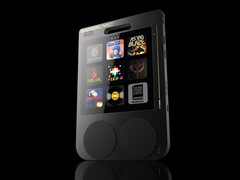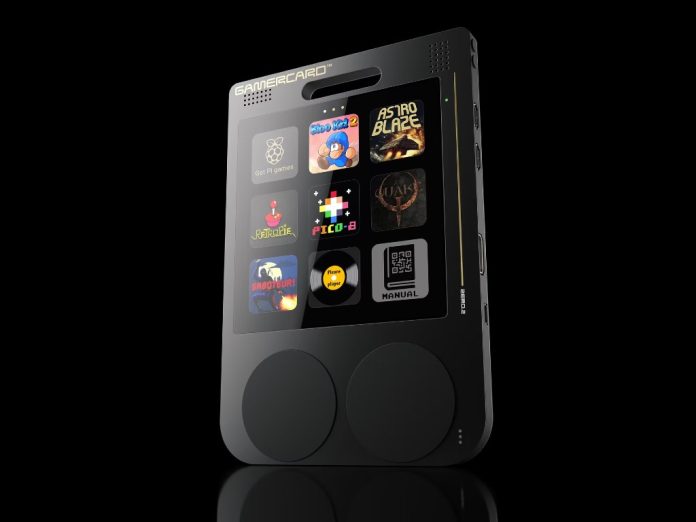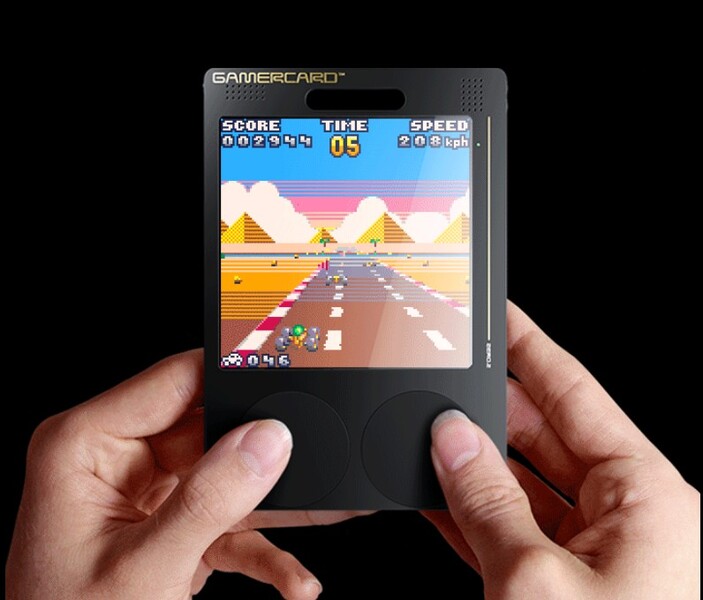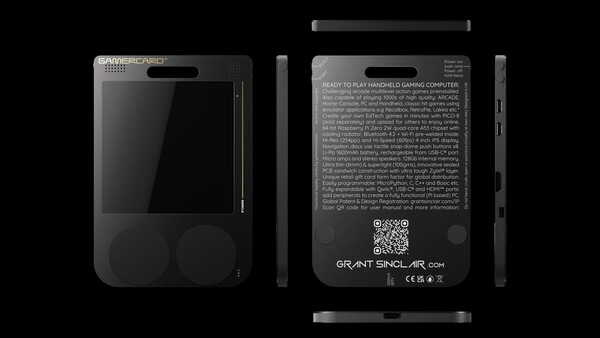
The GamerCard tries to stand out from other gaming handhelds with its ultra-slim design. Made by Grant Sinclair, the nephew of Sir Clive Sinclair who made the ZX Spectrum computer, the handheld ditches traditional thumbsticks and action buttons for two large silicone pads.
There are a plethora of gaming handheld devices available in different shapes and sizes, and while many are designed to fit into your pocket like the Retroid Pocket Mini V2 (available on Amazon for $269), they are still quite thick. That’s not the case with the GamerCard, a Raspberry Pi-powered handheld made by Grant Sinclair, the nephew of Sir Clive Sinclair, who invented the ZX Spectrum computer released in 1982.
With a thickness of 6.5mm, the GamerCard is quite thin for a handheld. It is also pretty light at just 100 grams. While the dimensions and weight are impressive, the overall design is quite unique. With an appearance that apes a gift card, the GamerCard has a slit at the top that allows it to be hung on a supermarket hook. Although a promotional video shows it in a supermarket store alongside a handful of gift cards, the GamerCard isn’t available to buy from brick and mortar stores.
With respect to its specs, the GamerCard has a 4.0-inch 60fps square IPS display with a 254 PPI and sapphire glass protection. It is powered by a Raspberry Pi Zero 2W computer which has a 64-bit quad-core processor with Cortex-A53 cores clocked at 1GHz and 512MB of SDRAM. There’s 128GB of storage but no MicroSD card slot.
The GamerCard has two large silicone control pads on the front and two smaller silicone pads on the back that serve as shoulder buttons. There are also two buttons on the upper right side which serve as Select and Start buttons while a single button on the upper left side serves as the power button. The handheld has no shortage of ports – on the right side is an HDMI port, a Qwiic port, and USB-ports for connecting peripherals to use it as a Raspberry Pi-powered computer. There’s also a USB-C port at the bottom for charging the 1,600mAh battery.
According to the product listing, all the control pads have anti-bacterial coating. There’s also an ultra-thin passive heat sink radiator that sits on top of the processor. Other features are stereo front-facing miniature speakers, micro LEDs for battery recharge status, Bluetooth 4.2, and Wi-Fi.
The GamerCard is available to buy now for £125 (~$171/€145) from the manufacturer’s website. It comes pre-installed with two games which were originally released for the Nintendo Switch but have been optimized for the GamerCard. Nevertheless, owners will be able to emulate thousands of retro games on the device.
Related Articles
Habeeb Onawole – Magazine Writer – 720 articles published on Notebookcheck since 2023
I love writing about consumer technology and have written thousands of articles that help people make informed decisions or get the best out of their devices. When I am not working, I am catching up on movies and TV shows or logging in hours on my Nintendo Switch or PlayStation.
Habeeb Onawole, 2025-07- 6 (Update: 2025-07- 6)



